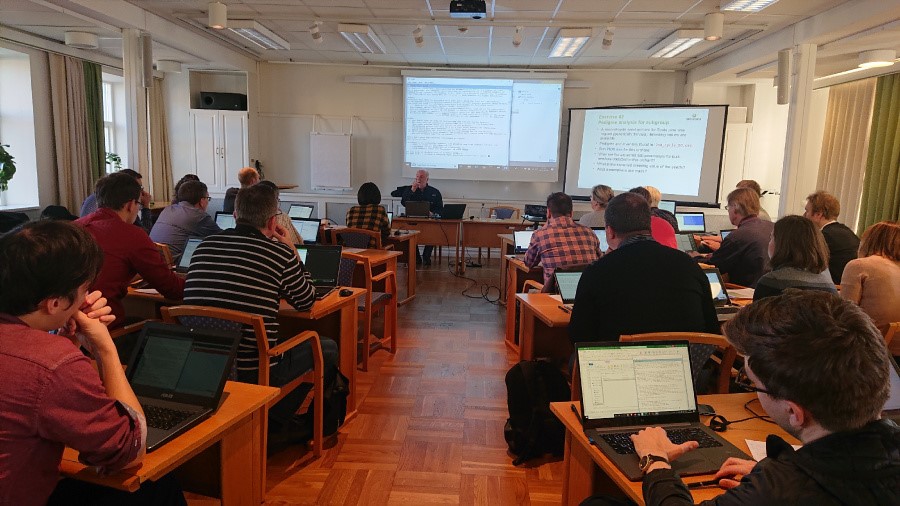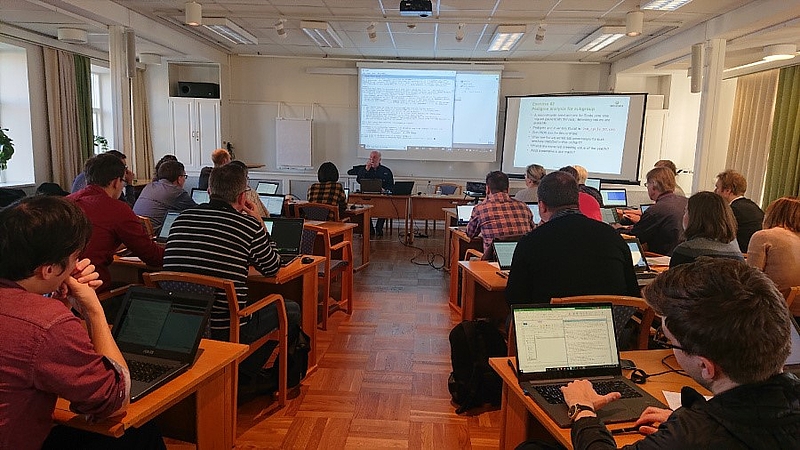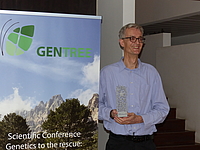
A training workshop for tree breeders focused on practicing use of software tools for optimum selection in forest tree breeding was held in Höör, Sweden, on 29-30 October 2019. These tools, updated within the GenTree project based on recent advancements in genomics and breeding theory, allow to optimize gains and, at the same time, maintain the level of genetic diversity in breeding populations at an acceptable level.
Tree breeders from a wide range of European countries - Croatia, Denmark, Estonia, Finland, France, Ireland, Latvia, Norway, Poland, Sweden, UK, as well as one from Brazil, joined the workshop for a hands-on experience. Tim Mullin (consultant at Skogforsk) and Leopoldo Sanchez-Rodriguez (INRAE) who have a long instructional experience, led the training.
Advances in tree breeding have mimicked those made in crop and livestock improvement, where crosses are made among phenotypically selected parents, progeny-evaluated through field tests. Selection is applied to identify material for deployment. In the management of forest genetic resources, a critical challenge is to find cost-effective strategies to avoid rapid losses of diversity in breeding populations despite the selection operated in the breeding process.
The theoretical work carried out within GenTree for optimal tree selection and mating had the objective to maximize genetic gain under the constraints of relatedness between individuals. Algorithms that would account for this condition were incorporated into the tools made available to breeders: OPSEL version 2.0 and XDesign version 1.0. Updated versions of these widely accessible tools were enriched with new features and added to the POPSIM simulation software, widely used for evaluation of tree breeding programs.
Existing “traditional” breeding activities can benefit immediately by incorporating an optimization methodology such as the one described above, to achieve the highest genetic gain while conserving genetic diversity.
The use of genomic tools in breeding can be as complex as a genetic evaluation based on high-density SNPs, or as simple as establishing paternity from a small list of candidates with a rather small number of DNA markers. Genetic monitoring can be used to evaluate the impact of silvicultural operations on seeds collected from managed stands and simulation can be used in various ways to identify superior management and breeding options.
The participants, all actively involved in tree breeding, found the course extremely relevant and will have an opportunity to incorporate the newly acquired skills in their work very soon.
Breeding dogs and trees
Looking at his pet labrador’s pedigree got Tim thinking about better ways to measure inbreeding in forests.


